The spring Tea harvest is drawing to a close, and naturally, the issue of tea tree pruning follows. Today, let's explore why tea trees need pruning and how it should be done.
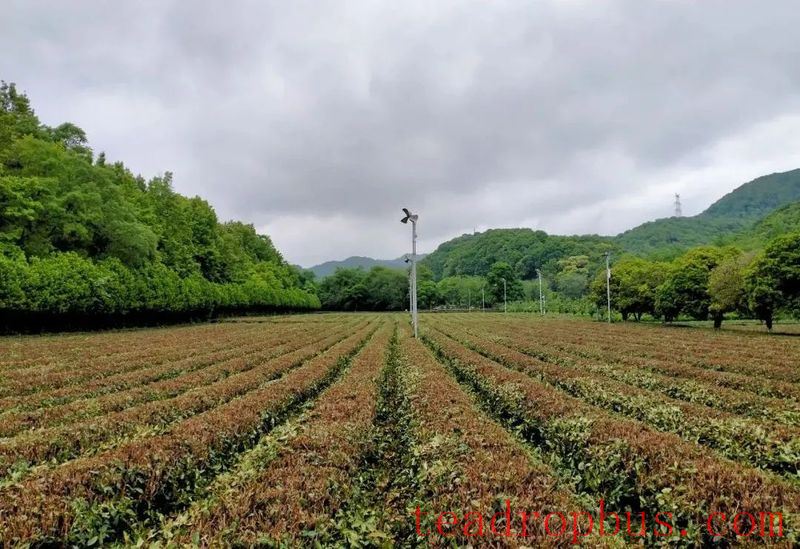
1. Physiological Basis for Tea Tree Pruning
Tea trees have a characteristic of apical dominance, where the tip of the main stem grows rapidly while lateral buds grow slowly or remain dormant. Apical dominance prevents lateral buds from sprouting or suppresses the growth of lateral branches. By pruning, we remove the apical dominance, thus eliminating the inhibitory effect of the terminal bud on the lateral buds. Tea tree pruning can reduce the stage of developmental age, thereby rejuvenating its growth vigor. In terms of tea tree growth, pruning disrupts the physiological balance between the above-ground and below-ground parts, playing a role in strengthening the growth of the above-ground part. Meanwhile, the vigorous growth of the canopy forms more photosynthetic products, which means the roots receive more nutrients, promoting further root growth.
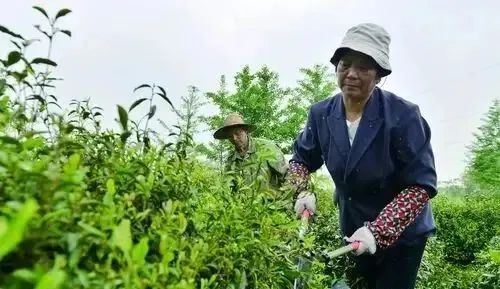
Additionally, pruning has a clear effect on altering the carbon-to-nitrogen ratio and promoting vegetative growth. The tender leaves of tea trees have a higher nitrogen content, while older leaves have a higher carbon content. If the top shoots are not pruned for a long time, the shoots become aged, with an increase in carbohydrates and a decrease in nitrogen content, resulting in a large carbon-to-nitrogen ratio and a decline in vegetative growth, which leads to an increase in flowers and fruits. However, pruning can reduce the number of growth points, relatively increasing the supply of water and nutrients absorbed by the roots. After cutting some branches, the new shoots have a smaller carbon-to-nitrogen ratio, thereby relatively strengthening the vegetative growth of the above-ground part.
2. Timing for Tea Tree Pruning
In Chinese Tea regions with distinct seasons, the period just before the spring sprouting (from Awakening of Insects to the Vernal Equinox) is the least impactful time for tea tree pruning. During this period, the roots have sufficient stored substances, and the temperature is gradually rising with ample rainfall, creating a suitable environment for tea tree growth. Moreover, spring marks the beginning of the annual growth cycle, allowing new shoots a longer time to develop fully after pruning.
The timing of pruning should also be determined based on local climatic conditions. In regions like Guangdong, Yunnan, and Fujian with consistently high temperatures throughout the year, pruning can be performed at the end of the tea season. In tea regions threatened by frost during winter and high-altitude tea regions, spring pruning should be delayed. However, in some areas, to prevent freezing damage to the canopy branches, reducing the height of the canopy is used to improve cold resistance, and such pruning is best done at the end of autumn. In tea regions with distinct dry and rainy seasons, pruning should not be conducted before the onset of the dry season, as this could make it difficult for new shoots to emerge after pruning.
3. Methods of Tea Tree Pruning
The pruning of mature tea trees is based on shaping pruning, mainly combining light pruning and deep pruning to maintain vigorous growth momentum and a uniform canopy for harvesting, leading to a large number of strong shoots and favorable sustained high yield.
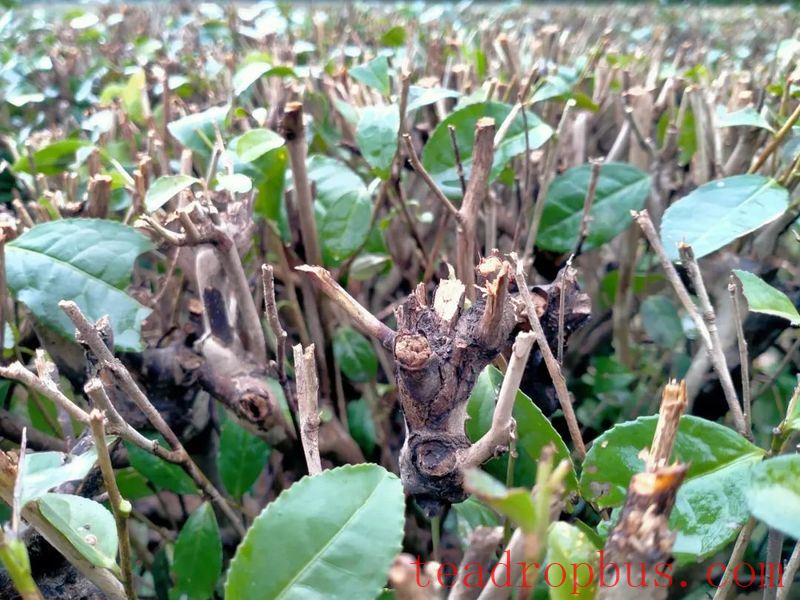
Light Pruning: Generally, one light pruning is performed each year on the canopy of the tea tree, raising the cut by 3-5 cm above the previous cut. If the canopy is uniform and the growth is vigorous, pruning can be done every other year. The purpose of light pruning is to maintain a uniform and strong foundation for budding on the harvesting surface, promoting vegetative growth and reducing flowering and fruiting. Light pruning is usually done immediately after the Spring Tea harvest, removing the local spring shoots and some of the previous year's autumn shoots.
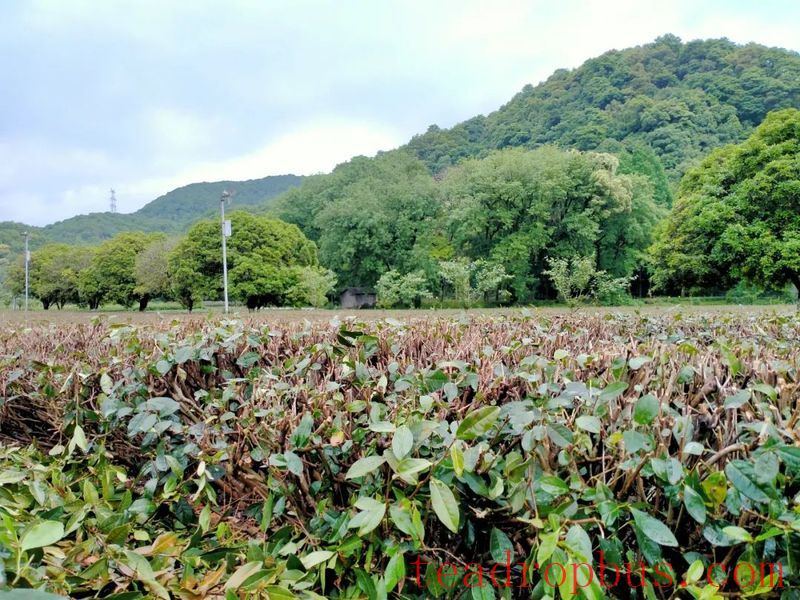
Deep Pruning: After years of harvesting and light pruning, many small, knotted branches, commonly known as “chicken claw branches,” appear on the canopy surface. Due to their many nodes, they obstruct the transport of nutrients, causing the buds and leaves that emerge to be thin, with a high proportion of opposite leaves, which can lower both yield and quality. Therefore, deep pruning must be performed every few years when these conditions occur, removing about 10-15 cm of the upper layer of chicken claw branches to restore the vigor of the tree and improve its ability to produce buds. After one deep pruning, continue with several years of light pruning until the chicken claw branches reappear, causing a drop in yield, at which point another deep pruning can be performed. This alternating process ensures the tea tree maintains vigorous growth and sustains high yields. Deep pruning is generally done before the spring sprouting.
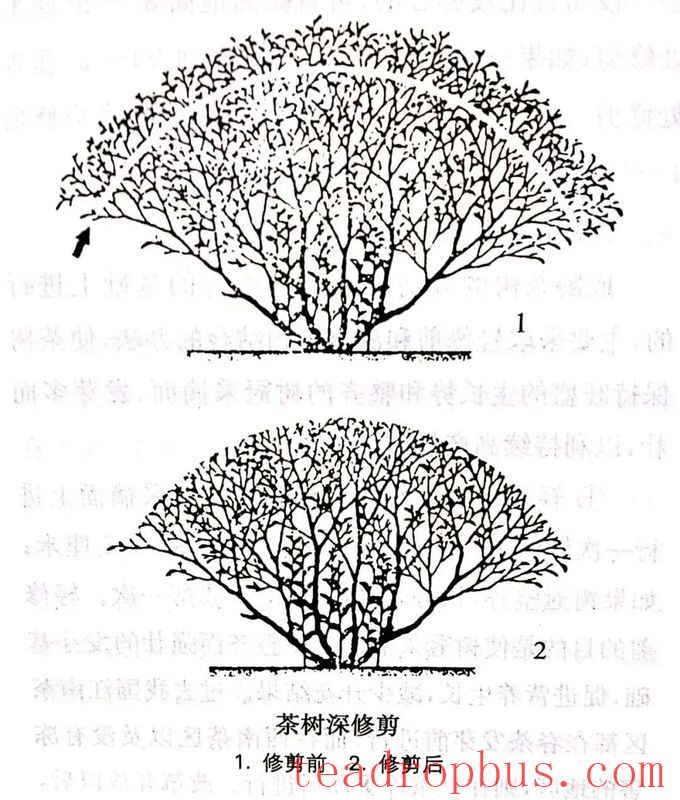
The tools for both light and deep pruning are hedge shears, with sharp blades and smooth cuts, avoiding damaging the branches as much as possible to ensure proper healing of wounds.
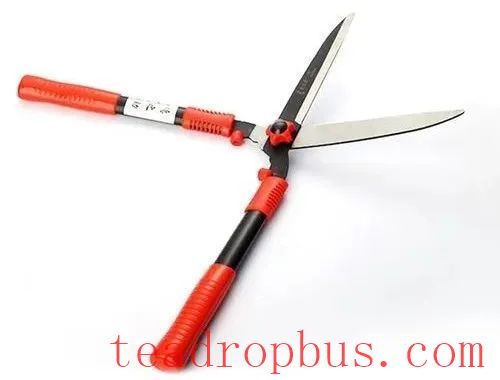
4. Coordination of Tea Tree Pruning with Other Measures
(1) It should be closely coordinated with fertilization and irrigation management. Apply deep organic fertilizers and phosphorus-potassium fertilizers before pruning, and then promptly apply top-dressing when new shoots sprout, which can promote robust and rapid growth of new shoots, fully utilizing the intended effects of pruning;
(2) It should be combined with selective picking. Since deep pruning reduces the leaf area and the photosynthetic surface, and the production branches sprouting below the pruning surface tend to be sparse and do not form a harvesting surface, selective picking is needed to increase the thickness of the branches and allow secondary growth branches to sprout on this basis, after which the harvesting surface can be reshaped through pruning;
(3) It should be coordinated with pest and disease control measures. For pests that harm young shoots, such as tea aphids, tea looper, tea tortrix moth, and tea green leafhopper, timely inspections and control are necessary. For the remaining branches and leaves of aged tea trees being rejuvenated, they should be promptly removed from the garden and treated, and a thorough pesticide application should be performed on the stumps and the ground around the tea plants to eliminate breeding grounds for diseases and pests.